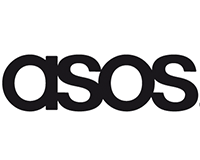The average age of the workforce at online clothing retailer Asos is 23. If you didn’t know that already it wouldn’t take long to work out after stepping into the group’s newly refurbished Camden headquarters. Apart from the fact that nearly everyone looks impossibly fresh-faced, the new office design is the ultimate reflection of a youthful work ethic.
From the towering, model-emblazoned, interactive screens that stretch from reception up through the entire central core to the US diner-style café and sofa-strewn breakout area, the new space embodies the Asos brand.
But most crucially for the property sector, the Moreysmith-designed refurbishment, which completed this summer, was as much about an expansion than a facelift. Potentially the first of many in the online retail sector.
Space to grow
The addition of 50,000 sq ft of in became necessary to accommodate thousands of extra staff as the e-tailer plans a colossal expansion both in the UK and overseas.
As swathes of bricks-and- mortar retailers continue to struggle in a tough market, Asos is one of the UK’s most prolific online success stories. The group more than doubled pre-tax profits to £30.3m for the year ending March 2012 compared with the previous year, with sales up by 46% to £495m.
And there is no sign of a slowdown. Quite the opposite, in fact. Chief executive Nick Robertson announced in May that a target of £1bn in annual sales by 2015 was “firmly” in sight following a 34% first-half turnover rise and 19% profit growth.
The new offices are now home to 1,600 staff members with “space to grow” across all floors and the possibility of further UK expansion within the next two years.
This is on top of ambitious international expansion across Europe, America, Australia and, most recently, China.
The great e-tail expansion
Asos is not the only online retailer splashing out on bigger, bolder offices. A report by Cushman & Wakefield, published last month, revealed that the UK is the world’s most developed online retail market. Amazon reported earlier this year that it had signed a lease on a new 210,000 sq ft office in Holborn with capacity for 1,600 staff as part of the group’s UK expansion.
Jonathan De Mello, head of retail consultancy at CBRE, says that the rise of the “statement office” will only increase as online retailers continue to take their share of the market. “These types of retailers and online companies like Google are forging ahead with a new breed of office development that takes that requirement for shared spaces and creative breakout areas to a new level. And I think we will see more requirements for this type of thing in key areas in city centres. This is because these firms tend to have a younger workforce, people who want to be in edgier, urban locations.”
One thing’s for sure – new office offerings will have a lot to live up to on the weird and wonderful scale.
From entirely knitted offices to a grass-carpeted bonsai room, see overleaf for some of the trendiest, and quirkiest, e-tail HQs around the world.
Maria Centracchio, head of property at Asos, talks about the company HQ’s fresh new look and how the design links into the brand
What has it been like managing a building like this, especially during such a high-profile expansion and refurbishment programme?
It is incredible to watch the transformation of such a beautiful space. It does have its faults, I’m not going to lie. It’s an old building, so the M&E isn’t great and there are things you have to live with and if we were developing an entirely new structure then, obviously, it would be much more efficient, so from that perspective it’s not perfect. But it is such an iconic building and such a lovely place for people to come to work in. And the floor plates are great. We have 54,000 sq ft, which really works for us now as we expand.
The new interior looks fresh and different with some impressive attention to detail. How does the design link in to the Asos brand?
The brand is everywhere. Literally, in some cases. The second floor is mainly taken up by womenswear and the product is all over the place. And that’s deliberate. We wanted to factor in space for that as we don’t want to hide all of that element of the business away. Some HQs have a clear desk policy and keep the product in warehouses. For us it is all here from the studios and runways for the shots and videos that end up online.
You now have 100,000 sq ft of space as a result of the expansion. Will that be it for a while now in London?
We have allowed for growth on all the floors. But it might well be that in two years we need to look for additional space. Where – we don’t know yet. We’ll see what happens.
What is it like working for such a successful e-tailer as the retail sector in general undergoes such a vast shift towards online sales?
Obviously, now is the time for online retail and there are lots of plans in the pipeline for international expansion. There is still a big market here in the UK for us to grow into. Predominantly we focus on our key market – the 26-year-old female – but we can afford to broaden out a lot from that here. Asos started an international expansion two years ago and now we are operating in the States, Germany, Italy, Australia. This year, we are moving into China and opening an office in Shanghai and have just started a Russian language website. It’s a big world out there and I think Asos would like a little bit of all of it. We sell our product to 181 countries and we want to expand that. In two or three years’ time we will have moved into a host of new markets. At the moment we have small offices overseas – maybe six people at a time – so small satellite offices. But that may well change as we continue to grow.
What does that look like in terms of space, both in terms of offices and warehouses?
It is hard to say. But we are expanding all the time. To put it in perspective, we are moving staff around about once every six months.
The more offices that start opening, the wider the brand reach. Does the Asos vibe, which is certainly very present in these offices, carry through to the others? The more offices we open and the more they grow, the more I think we will start to see that happening – to get to a point where you could be almost anywhere in the world and know you are in an Asos building. The artwork, the posters, maybe the design of the furniture. Things you can easily incorporate, even in small offices.
The wackiest e-tail offices around the world
Mind-boggling Japanese charm
Google, Japan
Founded: 1998
Turnover (Global): £32bn
Users (Global): More than 1bn searches a day, of which 15% are brand new questions and queries.
The HQ: Google’s latest offering opened over four floors in Tokyo’s Roppongi district opened in June this year.
Style: A mix of ornate Japanese style and clever tech devices. From trellis-carved concrete breeze blocks to a movement sensor digital koi pool and a grass carpeted bonsai room, the office is everything you would expect from the company that brought us the office slide back in 2007 in Zurich.
Wackiest feature: Where to begin? Even the mobile food stall and the traditional bathhouse office complete with ceramic floor tiles and vanity table-style computers can’t compete with the room decorated entirely with car wash curtains.
Expansion plans: Ongoing globally with particular anticipation for its 860,000 sq ft London HQ, King’s Cross.
The Handmade Haven
Etsy.com, Brooklyn
Founded: June 2005
Turnover: £350m
Users: 30m as of August 2013
Company: Arts, crafts and jewellery
The HQ: A 9,000 sq ft loft apartment
Style: Quirky, vintage and shamelessly odd. A giant owl made of ripped-up cardboard in reception? Gingham tablecloths instead of curtains? A shelving unit made out of a wooden canoe sawn in half? Check, check, check.
Wackiest feature: An “office” filled entirely with knitted equipment, from the typewriter to the mug on the desk.
Expansion plans: Undergoing a £25m expansion plan in Europe with a particular focus on the UK as demonstrated by the appointment of Nicole Vanderbilt as UK country manager last year.
The seattle space invasion
Amazon.com, Seattle
Founded: July 1994
Turnover: £39bn
Users: 65m a month
The proposed HQ: A clump of three five-storey transparent spheres stretching over a 3.3m sq ft in central Seattle.
Style: Basically a massive, high-tech conservatory. This would become outside/inside on a whole different level with room inside the 80-95 ft high spheres for mature trees.
Expected completion date: Late 2015 for the first phase.
Expansion plans: Rumours of a move out of Seattle to San Francisco, a plan to roll out an online grocery, a 5,000-strong employment drive to cover a warehouse expansion plan in the US, and a new 47,000 sq ft London office by the end of 2013 for 1,600 staff.
The Design-lover’s Paradise
Fab.com, Manhattan
Founded: February 2010
Turnover: £73m
Users: 10m as of December 2012
The HQ: A 47,000 sq ft creative hub, eight storeys up in the heart of Manhattan’s West Village.
Style: Bright, boxy and neon. Clean-lined interiors cluttered with odd-shaped furniture and giant toys strewn about.
Wackiest feature: A room covered in banana-scented scratch and sniff wallpaper. Expansion plans: Recalibrating expansion plans after an overly aggressive move into Europe prompted the group to refocus back on the US. But plans are afoot to expand into Asia with an eye on the Japanese market.











